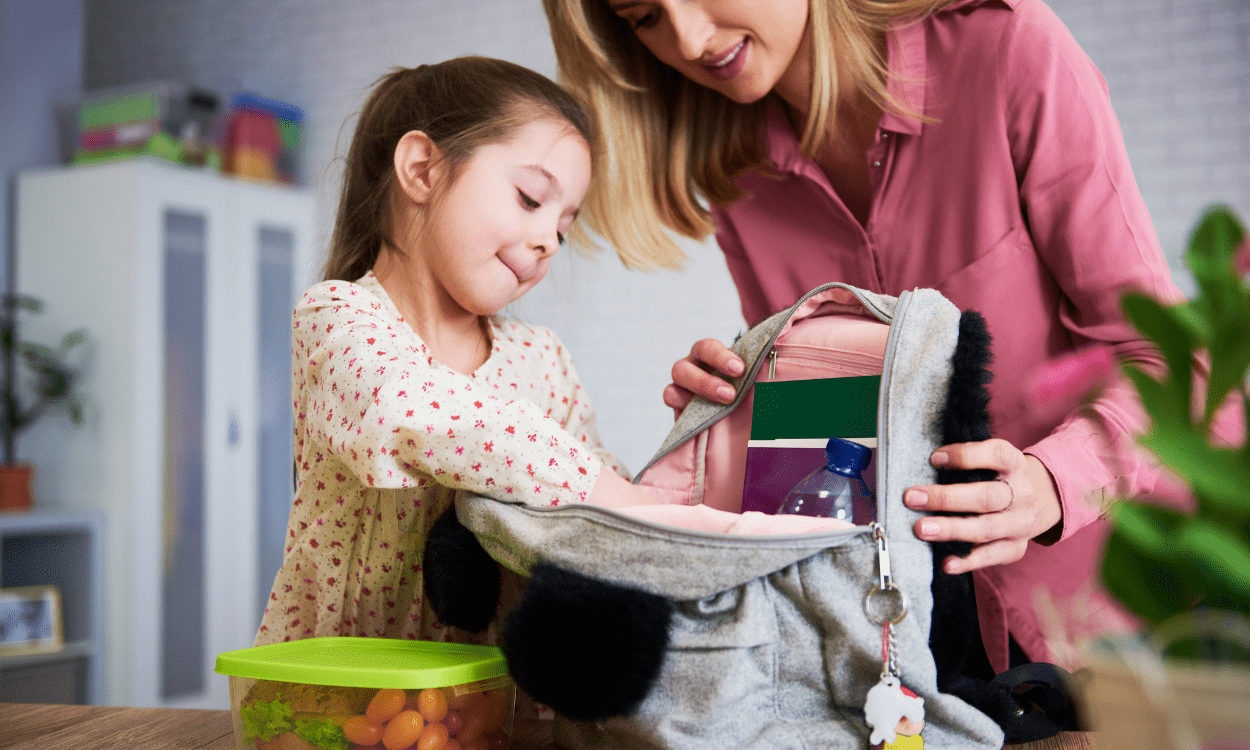In the Montessori curriculum, lunchtime is as important as it is fun!
We’ve discussed before that cooking with children introduces them to tons of practical life concepts like control of movement and care of self, and packing your child’s lunch is a great addition to their at-home Montessori education. Let’s discuss Montessori methods of making lunchtime fun, healthy, and educational for your child.
Provide healthy food options
At such an impressionable age, your child can develop a love for healthy, nutritional food if you give them the chance. That’s why it’s important to offer your child fresh food options when you’re helping them pack their lunch.
Guide their decision-making by giving them a small number of food options to choose from. For example, you could ask whether they want slices of an apple or a pear as a snack instead of offering them chips. This allows them to practice independence while you set them up to make good choices.
Set an appropriate portion size
Educating your child on portion sizes can help them feel satisfied without wasting food. Small portions of various foods can also help your child expand their palette and get all the vitamins and minerals they need to stay healthy. For example, you can offer your child one apple slice and a few baby carrots to eat with half of a peanut butter sandwich. Since each portion of the meal is small, they’ll be encouraged to try and finish everything.
Of course, healthy portion sizes vary greatly depending on age, so consider speaking to your doctor for more advice on what and how much your child should be eating for lunch.
Make fun twists on classic foods
One of the best ways to get your child to participate in packing their lunch is to present foods in appealing ways. This can make food prep more fun and interesting while still encouraging healthy food options.
For example, you can give your child the task of putting the raisins on top of the ants on a log that they’ll eat for snack time. If your child doesn’t like the crusts on their sandwiches, you could buy a cutter that’s in the shape of a dinosaur or a flower. Food presentation can have an impact on whether a child is willing to try new foods, so these little twists on classic foods can make a wider variety of food more appealing to them.
Model the behavior at a young age
Demonstrating healthy behaviors by eating well yourself can help instill healthy habits in your child from a young age. If you’re also eating fruits and veggies, your child may be more willing to try them.
As with all Montessori activities, getting your child involved early in life allows them to build on what they learn. Younger children can become more independent as you give them the structure and encouragement to make decisions. For example, consider chopping up enough apple slices and celery sticks for a few days’ worth of lunches and dividing them into single-portion containers in the fridge. This can help your child to recognize a suitable portion size on their own. Sooner than you know it, your child will be making healthy, yummy choices by themselves!
Food choice isn’t the only healthy behavior you can model, either — you can also demonstrate proper table manners for your child to learn. Make sure to emphasize the act of washing your hands before the meal, be patient when waiting to cut yourself a portion of the meal, and always say please and thank you. By consciously engaging with mealtime like this, your child can reap the proven benefits of family mealtime too, which can include a greater feeling of connectedness and fewer behavioral problems!
TIP! If you’re having a hard time getting your child to sit for the full meal, they might not be acting up; instead, their seat might not be comfortable. The general rule of thumb is to make sure their hips, knees, and ankles are at 90-degree angles with one another.
Are you ready to introduce Montessori learning into your child’s classroom as well? Schedule a tour of our Layton Lakes or Ahwatukee locations and see how could child could thrive with Inspire Kids Montessori!

